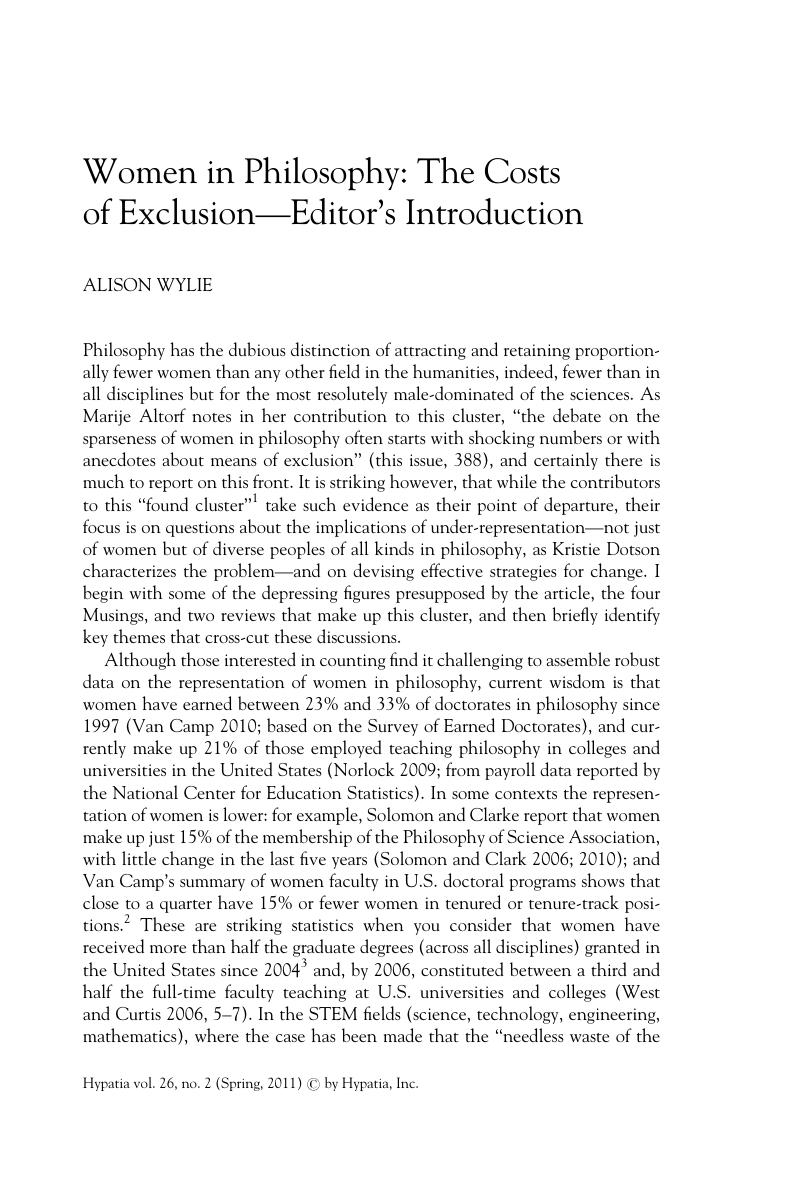Crossref Citations
This article has been cited by the following publications. This list is generated based on data provided by Crossref.
Antony, Louise
and
Cudd, Ann E.
2012.
The Mentoring Project.
Hypatia,
Vol. 27,
Issue. 2,
p.
461.
Dougherty, Tom
Baron, Samuel
and
Miller, Kristie
2015.
Why Do Female Students Leave Philosophy? The Story from Sydney.
Hypatia,
Vol. 30,
Issue. 2,
p.
467.
Bae, Bosco B.
2017.
Belief and Acceptance for the Study of Religion.
Method & Theory in the Study of Religion,
Vol. 29,
Issue. 1,
p.
57.
Ma, Debbie
Webster, Clennie
Tachibe, Nanae
and
Gressis, Robert
2018.
21% versus 79%: Explaining philosophy’s gender disparities with stereotyping and identification.
Philosophical Psychology,
Vol. 31,
Issue. 1,
p.
68.
Hänel, Hilkje C.
2020.
Hermeneutical Injustice, (Self-)Recognition, and Academia.
Hypatia,
Vol. 35,
Issue. 2,
p.
336.
Easton, Christina
2021.
Women and ‘the philosophical personality’: evaluating whether gender differences in the Cognitive Reflection Test have significance for explaining the gender gap in Philosophy.
Synthese,
Vol. 198,
Issue. 1,
p.
139.
Sample, Matthew
2022.
Science, responsibility, and the philosophical imagination.
Synthese,
Vol. 200,
Issue. 2,
Whiting, Lisa
and
Buxton, Rebecca
2023.
Women in Philosophy: What is to be Done?.
European journal of analytic philosophy,
Vol. 19,
Issue. 1,
p.
SI6.



